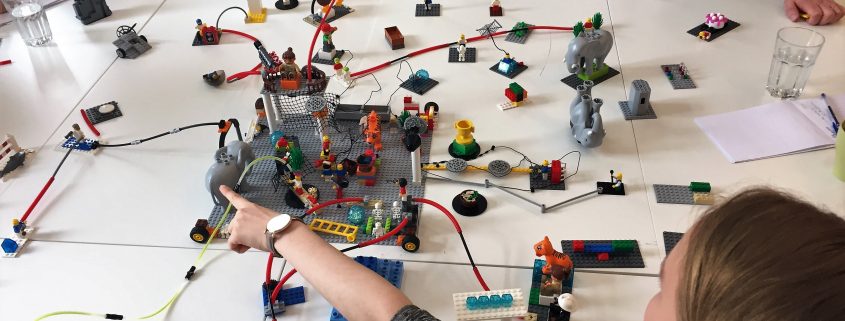Many have experienced this before, so you can probably relate to this. Imagine you have been invited to participate in a meeting with a couple of colleagues to solve a problem. The meeting kicks off and the sponsor of the meeting dives into the agenda. After a while, it happens, you suddenly look around the room and almost say these words out loud “Why am I here?”. You spaced out a while ago, but you kept nodding your head in agreement with what was been discussed. You spaced out as soon as abstract concepts were written on the flip chart. You only returned from dream land because something weird happened while you were there. In dream land, you ran into a couple of your colleagues that are supposedly sitting next to you in the meeting. You jolt back to reality and look at your colleagues they look spaced out, probably still enjoying dream land. The meeting is still the same as you left it. 20% of the people in the room are still doing 80% of the talking. So much for 100% involvement!
This is a common occurrence in most meetings held in many organisations. Meetings are set up in such a way that the outcome is deprived of 100% contribution or involvement resulting in untapped knowledge sitting in the room. One unconventional tool that addresses this problem is Lego Serious Play. It is a thinking, communicating and problem-solving technique for organizations, teams and individuals. It is a four-step process that starts with the facilitator posing a question to the participants. The participants in response build a metaphorical model with Lego bricks representing their understanding of the topic. They share the story of the model with other participants and reflect on the model afterwards. By applying a series of special techniques to this process, a trained facilitator can unlock new knowledge and each person’s full potential, align and synchronize group understanding, identify patterns in focused topics, make connections and see relations, show interdependencies in a system, practise strategizing and strengthen decision making. These application techniques could be used to address various topics such as leadership, creativity and innovation, product development, strategy, culture and identity and so many other topics in the work place. For many who have experienced the method, they are amazed at the level of engagement achieved during the process. Building metaphorical models allow for more imagination about serious issues with a touch of playfulness altogether creating a unique experience for the participant. In the process, one’s imagination has no limits. A Lego brick has no one meaning, it could literarily mean anything. A white brick could mean a project, happiness, a white space or opportunity, anything that your imagination allows. Thus, given each participant some room to express themselves using metaphors and consolidate knowledge in a unique way, such that ideas and thoughts are made tangible on the table for everyone to see and share, which makes it easier to invite others to join in reflection.
The science behind the methodology focuses on theories around play, constructionism, the use of metaphors, hand-mind connection, imagination and complex adaptive systems. When adults play (in organizations), it is often with the intention of binding ties in the workplace, improving learning and development and enabling constructive competition that enable people to strive to perform at their best. The hand-mind connection research findings show that 70% to 80% of the brain cells are connected to our hands and with the help of all the neural connections in our hands we know a lot more than we think we know. Physically handling objects activates a richer kind of learning that is often not experienced in two dimensional conditions.


